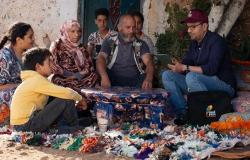In recent years, Morocco has embarked on a digital transformation of his administration. Unified portals, online forms, electronic payments … The milestones of a digital state are being set up. But according to The 2024 edition of the Gemsthe UN index which assesses the maturity of electronic and mobile services, the kingdom remains confined to a median position: 0.42 on a scale of 1. A note which places it in the category of countries with average maturity, just above the 0.4 bar. However, this figure masks a progression, but it also signals a glass ceiling. The report, published by the CESAO (Economic and Social Commission for Western Asia), highlights an increasing contrast between countries which accelerate their digital transformation, often in the Gulf, and those, like Morocco, whose progression remains more prudent, sometimes hampered by structural obstacles.
Online services, but still hesitant adoption
But the relationship points to a more nuanced reality: the rate of use of these services remains lower than expectations. This can be explained by several factors, including the lack of awareness, sometimes complex interfaces, unequal access to digital tools and a certain skepticism on the part of users in the face of perceived reliability.
Inclusion: the silent challenge
One of the most prominent dead angles concerns accessibility of services for audiences specific, especially people with disabilities. Morocco displays weak On indicators related to compliance with international standards (such as the WCAG 2.1 standard), especially on mobile platforms. Few applications still incorporate suitable features, such as voice navigation or reinforced contrasts. A weakness shared with several North African countries, but which contrasts with The inclusive approach Adopted by states such as the United Arab Emirates or Qatar, where user experience is thought from the start as personalized, fluid and universal.
Interoperability and mutualisation: the next steps
Morocco is also slowed down by a persistent fragmentation of its digital services. Many administrations continue to operate in a compartmentalized way, each developing its own systems Without real coordination with others. Result: the data does not easily circulate between the ministries, the platforms do not “speak”, and the user often finds himself repeating the same steps from one service to another. This interoperabilityin other words, the capacity of systems to exchange effectively information, is one of the weak points noted by the Gems index. However, the idea of a one -stop shop, supposed to bring together all the services in a centralized access pointis at the heart of Moroccan strategies. But in the field, its generalization is still unfinished. Efforts exist: the rise of The Digital Development Agencythe implementation of the strategy “Morocco Digital 2025», Or the experimentation of open data solutions welcomed in the report. But the lack of convergence between institutions remains a brake.
Regional comparisons: the peloton split
With a score of 0.42, Morocco is located today in the low average of the regional classificationpreceded by several Arab countries which have been able to give a more sustained impetus to their digital transformation. There Jordanfor example, reached a score of 0.63. It gave the bet of proximity by investing in the training of its public officials and by further involving citizens in the design of services, according to a participative logic. This approach made it possible to create tools better suited to the real needs of users and to strengthen confidence in digital administration. For its part, Tunisia, despite a more unstable institutional context, is also progressing. With a score of 0.47, it slightly exceeds Morocco. Its strategy focused on the integration of platforms and pooling digital efforts nationally.
Morocco is not late, but it is at the crossroads, therefore estimates the UN report. If he wants to avoid a structural dropout, he must cross a level: strengthen the real use of services, improve ergonomics and accessibility, bet on digital inclusion tools and above all accelerate unified governance of public digital. The dynamics are there, but it must now change scale. Because as the rapport GEMSdigital maturity cannot be decreed: it is built by use, listening and permanent adaptation.








